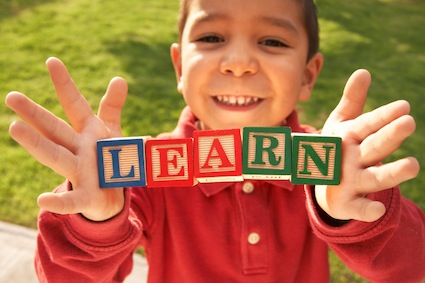As children, many of today’s preschool teachers probably picked up a Spanish word or two while watching Sesame Street. (Anyone else remember Luis looking for agua?)
Now, with people of Hispanic descent making up the fastest growing segment of the population in the United States, those same educators teaching a daycare or preschool curriculum probably can put those words to good use in the classroom. However, effectively teaching English Language Learners in preschool takes more than speaking one or two words in Spanish.
Hispanic ELL students in preschool
Longitudinal studies show the lasting effects of a quality preschool curriculum on at-risk students, including increasing the likelihood of graduating high school and attending college. While these studies primarily focus on at-risk children in general, many of today’s at-risk students are English Language Leaners. In fact, 21 percent of all children under the age of 5 are Hispanic (although not all are English Language Learners). A recent policy brief published by NIERR (National Institute for Early Education Research) asks whether or not today’s preschool curriculum is preparing Hispanic children in particular to succeed in school. The report outlines recommendations for decision makers to consider when evaluating or establishing a preschool curriculum or program.
4 recommendations for states to consider for Hispanic English Language Learners in public preschool, according to NIEER
- Evaluate preschool education policies with Hispanic children in mind. If ELL status is not a factor considered for targeted program eligibility, a consideration should be given to making it so.
- As future programs expand, conducting comparative analyses of targeted programs and PreK for all children may prove useful. Universal programs can cost less per child and resolve problems of eligibility.
- States should ensure programs have some support for ELL children in their home language. Research shows that preschool curriculum that also supports the language used at home improves cognitive, linguistic, and social outcomes.
- It should be a high priority at the state and federal levels to develop better reporting systems to ensure quality data for stronger research on Hispanic children and early education policies.
You can read the full policy brief here: “Is Public Pre-K Preparing Hispanic Children to Succeed in School?”
Use music to teach ELLs early literacy and language development
Every child speaks music! ABC Music & Me uses music to teach early literacy and language development and school readiness skills to young children and engage families in their children’s education. The research-based curriculum can be especially beneficial for English Language Learners. In every unit of ABC Music & Me, children hear stories read aloud and sing songs that include new vocabulary words. Words essential to the unit’s theme are included on picture cards along with recommended instruction for ELL students, expanding the possibilities for vocabulary acquisition. Plus, ABC Music & Me aligns with Title III requirements and our “English Language Learners Strategies Guide” provides unit-by-unit, lesson-by-lesson tips.
According to the NIEER report, Hispanic families continue to encounter barriers to sending their children to preschool, including lack of parental education and language barriers. However, we build parental involvement right into our preschool curriculum, because we know that a parent is a child’s first and best teacher. ABC Music & Me includes materials in English and Spanish, including robust literacy activities, to increase parent involvement and support the common language spoken in the home.


